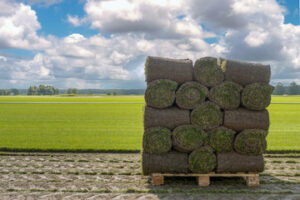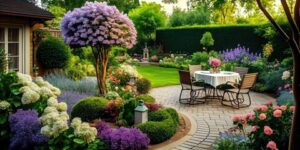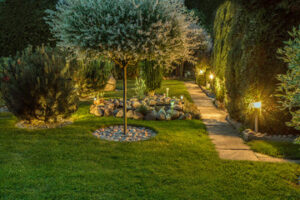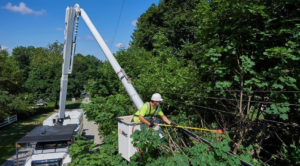When choosing sod for your lawn, it is important to consider the specific maintenance needs and climate conditions of your region. For example, some sod types may require more or less watering or mowing than others.
Installing sod requires precision and care, ensuring seamless integration for a flawless lawn. Regular watering and maintenance foster root growth, guaranteeing a vibrant and resilient turf. Whether for a new home or revitalizing an existing yard, Sod And Turf Harrisburg PA provides an efficient, visually appealing solution, elevating outdoor spaces and enriching the environment.

A reputable and experienced sod company can help you create a lush, vibrant yard that complements your home’s exterior. Here are six things to look for when choosing a sod company:
Cost
A lush green lawn adds beauty to a property and increases curb appeal. However, it is a substantial investment and requires careful consideration. Choosing the right sod company is crucial to ensure a quality result that will benefit your financial situation. The following tips can help you choose a sod installation company that is both cost-effective and offers great value.
It is important to keep in mind that sod costs anywhere from $1 to $2 per square foot, depending on the type of sod grass and your location. The best way to determine if a sod company is reputable is to look at their website and read reviews. You can also check the company’s reputation by asking friends and neighbors about their experiences.
Sod is a great option for homeowners that want to have a full, dense lawn immediately. A reputable sod company should have a comprehensive process in place to ensure a smooth and successful installation. For example, the soil should be tested to determine its nutrient content and pH level. It should also be free of weeds, rocks, and other debris. A thorough process will ensure that your sod thrives and is well-rooted into the soil.
It is also important to consider the amount of sunlight your yard receives when choosing sod. Different sod varieties germinate at different rates and will work better in different types of sunlight. For example, Bermuda grass will thrive in sunny yards, while St Augustine and Tall Fescue are suited to shaded areas. Choosing the right sod for your yard will help you maintain a healthy, beautiful lawn for years to come.
Another way to save money on sod is to buy it in bulk. The cost of bulk sod is usually lower than the price per piece, and it can be easier to handle. However, it is important to measure the area and calculate the amount of sod you need before purchasing it. Additionally, it is important to water the sod thoroughly after it has been laid. A lack of moisture is the most common cause of sod deterioration. Therefore, it is important to water the sod daily until it has firmly established roots.
Reputation
A company’s reputation is a huge factor when it comes to evaluating sod companies. You can find out if they have an excellent reputation by looking at their online reviews and customer feedback. You can also ask friends and neighbors about their experiences with sod companies.
Choosing the right sod company is crucial to your financial situation. A good company will have a clear process and be transparent with you about the cost. They will visit your home to measure the lawn and determine how much sod is needed. Then, they will provide you with a quote and an estimated completion date. They will also explain any other work you may need to complete before laying the sod.
When selecting a sod company, look for a local grower that specializes in your area’s climate. This will increase the likelihood that your sod is delivered in peak condition and will help support the local economy. In addition, local growers understand the land and weather conditions better and can offer more personalized assistance.
Sod is cultivated grass that’s sold in ready-to-install strips or slabs. It’s a popular choice for homeowners who want a lush green lawn quickly. Sod is also used for commercial and residential landscapes, golf courses, and sports fields. It’s easier to maintain than seeded lawns and can add value to your property.
When purchasing sod, consider the amount of sun and shade your lawn receives. For example, some residents should stay away from bluegrass and ryegrass, which are great in cold climates but shrivel under the heat of the summer sun. Instead, choose sod varieties like bahiagrass or zoysia grass.
In addition to sod, a good sod company will offer other landscaping services, such as edging, mowing, and adding garden beds. This will save you time and money, and ensure that your new sod thrives. In some cases, these services will also be included in the initial price of the sod installation.
An additional service that sod companies often provide is weed control. This will save you time and money and prevent the need to use weed killers later on. In addition, it will protect your lawn from pests and fungus.
Experience
A lush green lawn is a desirable feature for any property. It provides a sense of instant sophistication and elevates the curb appeal of your home or office. However, a beautiful yard requires more than just a quick installation. You need to take the time to care for it so that it stays healthy and strong.
The right sod company can help you achieve the lawn of your dreams without the time and cost of a DIY job. The right landscaper will use a variety of grass types that thrive in your climate and soil conditions. This allows you to enjoy a beautiful lawn for a long time. They will also provide maintenance services such as mowing, watering, fertilization, and pest control. This will keep your yard looking its best and allow you to focus on the important things in life.
When choosing a sod company, be sure to consider their experience. A reputable sod company will have a proven track record and can provide references from previous customers. Moreover, they will be willing to work with you to accommodate your budget. They will also be able to answer any questions you may have about sod and its installation.
Sod is a popular choice for replacing existing lawns or creating new landscaping areas in a residential or commercial setting. It offers several advantages over seed, including speed of establishment and durability. It also prevents erosion of the soil and enhances drainage in problem areas. Additionally, it can be planted at any time of the year, unlike grass seed, which has a limited window when the ground is not frozen.
Choosing the right sod company can be difficult, especially because not all landscapers offer sod installation as one of their services. To ensure you choose a quality sod company, ask about their process and what they will do to prepare the site before installing the sod. In addition, ask about the sod supplier and where it is grown. Ideally, you should try to find a sod company that is local to you, as they will have the best selection of sod and will be able to provide you with a quality result.
Sod, a lush carpet of grass and soil, transforms landscapes and enhances outdoor spaces. This natural wonder provides an instant green solution, ideal for quick lawn establishment. Sodding involves rolling out pre-grown grass, fostering rapid establishment with mature roots. It’s a popular choice for homeowners seeking immediate beauty.
Sod offers numerous benefits, including erosion control, improved air quality, and a cooler environment. Its dense roots help prevent soil erosion, making it a valuable tool for landscaping projects. Additionally, sod absorbs carbon dioxide and releases oxygen, contributing to a healthier atmosphere. The cooling effect of grass makes it a natural air conditioner, reducing ambient temperatures in urban areas.



